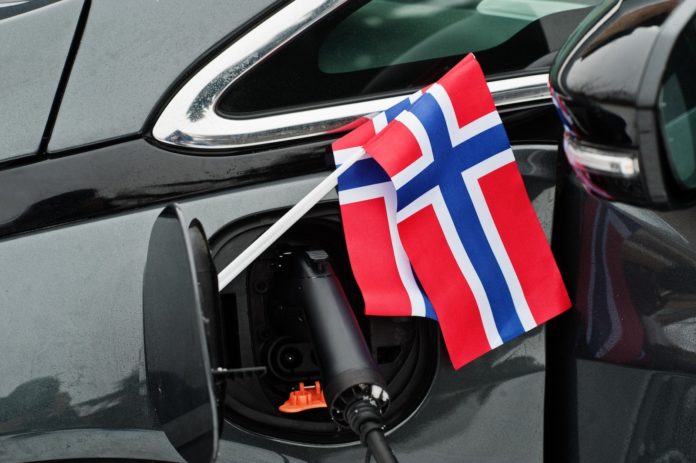Quick question: which country intends to be the first to ban sales of all gasoline- and diesel-powered automobiles? If you guessed Norway, you’re correct.
Odds are you didn’t.
Nevertheless, the Land of the Midnight Sun is attempting to end the sale of internal combustion engine (ICE) vehicles by 2025, despite being the 13th largest producer of oil in the world. To accomplish this feat, Norway exempts battery-electric vehicles from taxes, a luxury not afforded buyers of ICE vehicles.
This is why 79.3% of vehicles sold in Norway last year were battery powered, up from 65% in 2021 and 2.9% a decade ago, according to the Norwegian Road Federation. This is why the country produces 2,003,748 barrels of oil a day, but consumes a mere 204,090 barrels daily. It is Western Europe’s largest oil and gas producer.
And the car Norwegians buy most? The Tesla Model Y, followed by the Volkswagen ID.4 and the Skoda Enyaq. Overall, Tesla holds a 12.2% market share, ahead of all other brands, followed by Volkswagen with a 11.6% market share.
A costly endeavor
While environmentally well-intentioned, tax exemptions come at a cost. Norwegian government tax exemptions cost the state 39.4 billion crowns (or $4 billion) in lost revenue in 2022. Given that huge loss in income, the government is curbing its tax exemptions for high-end vehicles.

Last year, an electric Porsche Turbo S customer would have paid at least 1.7 million crowns ($172,226); far less than the 2.1 million ($212,750) its gasoline-powered counterpart would have cost, with taxes.
But the country’s ambition to be the first to ban the sale of gasoline and diesel vehicles by 2025 could be thwarted by new tariffs. As of Jan. 1, only the first 500,000 crowns ($50,000) of the car’s price will qualify for the 25% tax break on the purchase of new electric automobiles.
“All-electric cars receive support at the bottom (of the price range), but the more expensive electric car you buy, the more VAT you have to pay,” Minister of Finance Trygve Slagsvold Vedum said, according to Norway news site, The Local.
Nevertheless, the country’s tax exemption had its desired effect.
Norway’s electric car fleet took almost 10 years to grow from nothing to 10% of the market, which it reached in March 2020. But it only took less than three years for the share to double to 20 percent. Within three years, that’s expected to be 30 percent. One in five cars in Norway are currently electrically powered.
The Nordic country became the first in the world in 2020 to see new vehicle sales of electric vehicles surpass those of fossil-fueled ones.
But the new tax is similar to the one enacted by Congress in the Inflation Reduction Act.
The new U.S. tax scheme
The new year brings new EV tax rules to the United States as well as Norway.

Under the Inflation Reduction Act of 2022, to qualify for a tax credit of up to $7,500, a vehicle’s final assembly location must be in North America, which is defined as the U.S., Canada or Mexico, and cost less than $55,000 for cars, and $80,000 for trucks and SUVs. Also, buyers must have a modified adjusted gross income of less than $150,000 annually, or up to $300,000 for families and couples to qualify.
Finally, vehicles need to comply with battery sourcing criteria in order to receive the entire $7,500 tax credit. Certain essential minerals must be mined or recycled in the United States or a free trade partner.
The requirement is implemented gradually, with a 40% threshold for cars put into service before Jan. 1, 2024, a 50% threshold for the following calendar year, and increases of 10% every year until an 80% threshold is reached in 2027. The same standards apply to other battery components until a 100% compliance rate is obtained for the year 2029. If the battery satisfies the mineral criterion, half of the $7,500 tax credit is granted; the other half is based on the battery component requirement.
The development of resources from nations other than China, where more than 75% of such elements are now obtained, will be necessary to meet the revised battery composition standards. This may prevent tax credits from being granted to many currently eligible automobiles in the future because the supply chain for manufacturer’s battery components is not publicly disclosed in detail.

